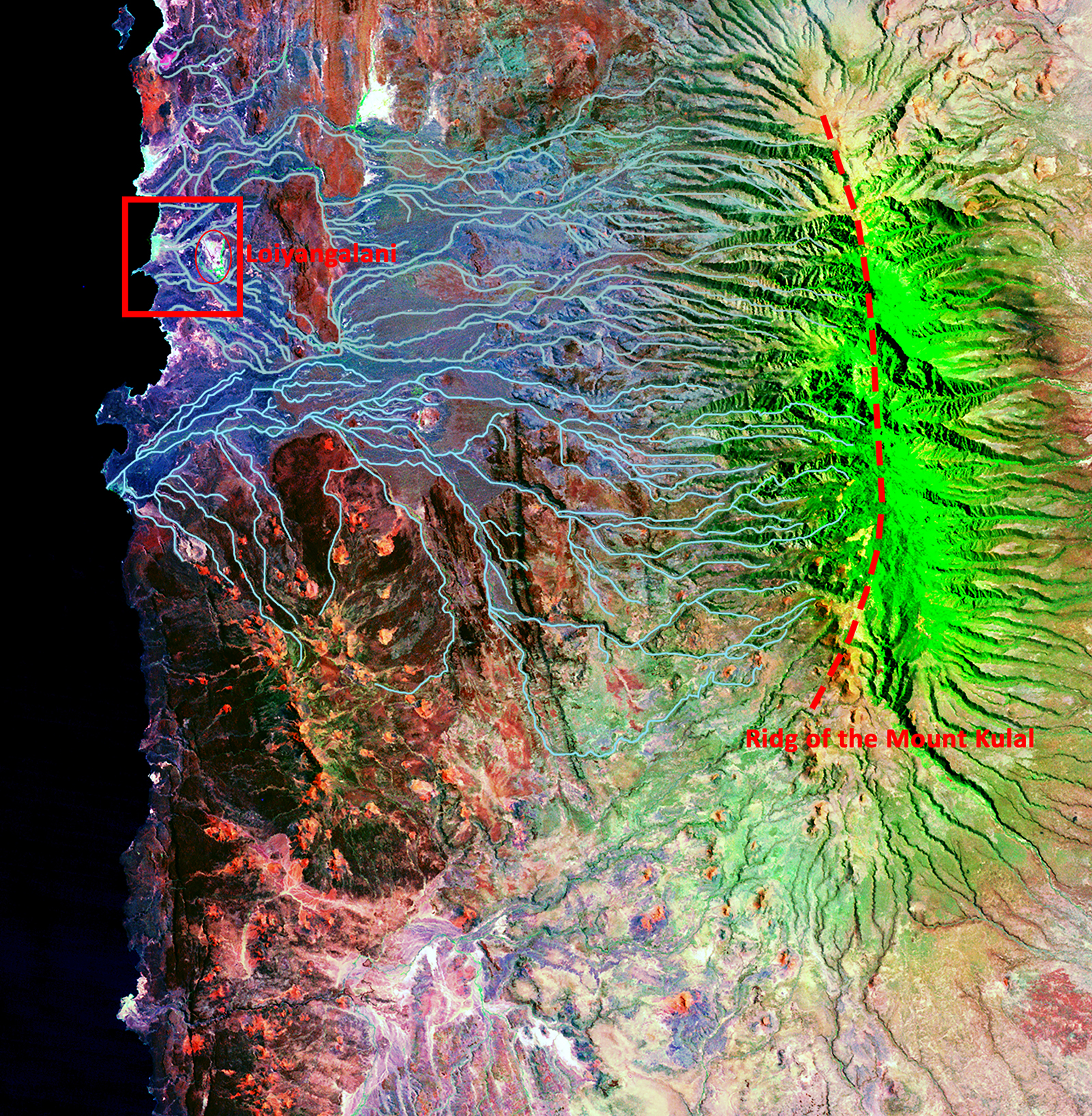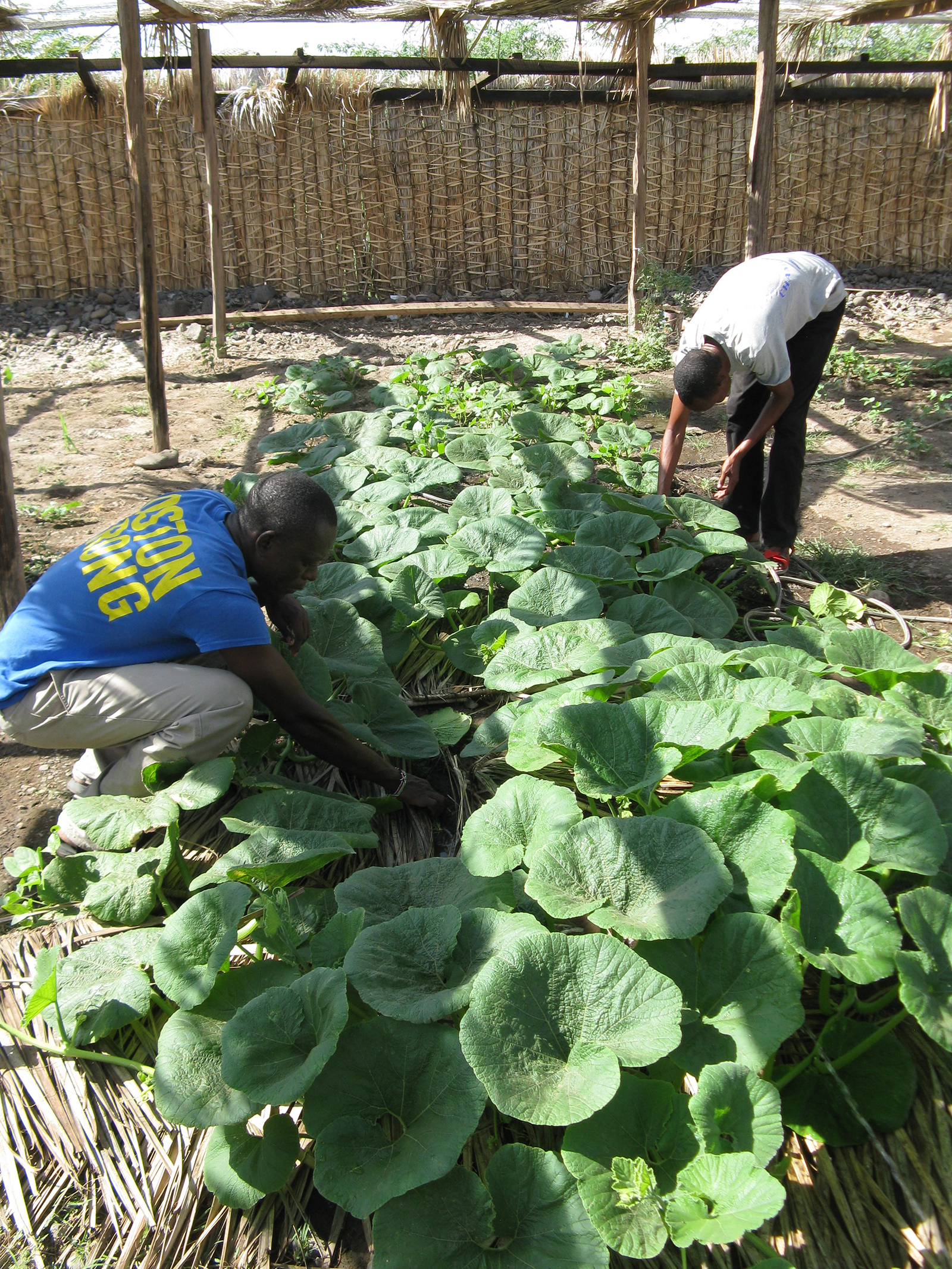Rehabilitation of derelict landscapes
2018 Oasis Ecosystem
Oasis Ecosystem is a project that put together the three basic elements for the life: the soil reconstruction, the supply of water and the planting of trees, shrubs and herbaceous plants, aimed at expanding the ecosystem of the Loiyangalani Oasis (North Kenya) and to defend it from the desertification. The ongoing desertification process is putting the survival of local populations at risk along Lake Turkana, the world’s largest permanent lake in a desert area.
WHERE
Oasis of Loiyangalani, Lake Turkana, Marsabit County, Kenya.
WHEN
2008-2010. Research and feasibility projects.
2015-2018. Detailed projects, Works and Information – awareness.
WHO
Designers/ Lorenzo Vallerini – Architect, Landscape Architect, Scientific Coordinator of the Turkana Scientific Research Group.
Turkana Scientific Research Group – Giovanni Caponi (Surveyor, Surveys and cartography), Giancarlo Ceccanti and Marco Folini (Geologists, Underground waters), Piero Magazzini and Ugo Wolf (Soil Scientists, Agronomists), Marco Mazzoni and Paolo Altemura (Chemists, Waters).
ArchlandStudio, Florence, Italy. Drawings Design and Project Support: Eleonora Giannini Architect, Lorenzo Nofroni Landscape architect, Luca Vallerini Designer
Consilium srl , Florence, Italy. Electrical system, Water supply system and sewerage system for M&C Building: Paolo Breschi and Paolo Frosini Engineers.
Clients/ European Union and Government of Kenya –Community Action for Improved Drought Response and Resilience – CAIDRR (SHARE – KENYA). NGO “Veterinarians without Borders, Germany” VSF-G Kenya Nairobi (leading partner) and NGO “Water Right Foundation” WRF-Florence,Italy.
WHAT
Size/ Research and feasibility project: 395 hectares (extension of the Oasis of Loiyangalani).
- New well, pipline and tank, for water distribution: 4.027 sqm (1.0 ac);
- Oasis reconstruction, palm garden and forestry: 5.635 sqm (1.40 ac);
- Grass of Vectiveria zizanoides for pasture: 8.395 sqm (2.01 ac);
- M&C centre, small nursery, compost plant: 854 sqm (0.21 ac);
- Open air nursery Forestry: 3.379 sqm (0.83 ac).
The Oasis Ecosystem project (2015-2018) aims to realize a prototype of “re-vegetation” aimed at expanding the ecosystem of the Oasis of Loiyangalani, to increase food productivity and to provide new pasture areas for domestic animals (goats and donkeys) which are one of the main causes/effects of soil degradation. To achieve all this, it is also essential to increase the available water resources for irrigation and water-drinking purposes. Despite the fact that there is an important presence of water in the Oasis from thermal springs coming from Mount Kulal, the Loyangalani Oasis area itself is arid and with sterile soils, very hot and driven by strong winds, with a large mass of water, by Lake Turkana, apparently available, but, because of the strong alkalinity of its waters, not usable for potable purposes nor for irrigation purposes.
Within the Oasis of Loiyangalani five intervention areas have been identified with pilot projects that would allow the testing of implementation methods based on an integrated and interdisciplinary scientific approach in relation to: access to water; reconstruction of the Oasis plant ecosystem; reconstruction of pasture areas; construction of a new nursery and a monitoring centre.
The construction of a well connected to a system of distribution of water for the inhabitants of the village, improved the conditions of access to the drinking water resource. The realization of a date palm cultivation in association with fruit trees and horticulture and the realization of an intervention to expand the vegetation of the oasis with the planting of native shrubs and trees, represent a first strategic intervention for the reconstruction of the ecosystem. In an area of about 8,395 square meters was started the cultivation of Vetiveria zizanioides Linn. or khas grass, for fodder production for livestock to be used in times of drought crisis. The construction of the new nursery with the composting plant and the Monitoring and Documentation Centre (M&C Centre), has allowed the production of plants to be planted over time throughout the Oasis, the construction of a composting plant from organic waste will allow the improvement of soil fertility, while the implementation of the M&C Centre allows the management of all the interventions carried out and, it is hoped, their further expansion.
The five projects as a whole are the starting point and a practical demonstration of feasibility for the local authorities and populations which, once acquired the techniques and capacity, will be able to expand activities and develop new means to combat desertification processes and protect local resources. It is a matter of “closing the circle”, that is to give opportunities to the men who live in these lands to be able to stay there maintaining their cultural identities, important also for the environment that hosts them, and to find synergies between food production and the fight against desertification, between conservation of resources and new technologies adaptable to traditional knowledge’s.
REFERENCES/LINK
- Nofroni L., 2019. Contrastare la desertificazione, Combating desertification, in “Architettura del Paesaggio” n.38 pagg 36-41, Edifir Edizioni, Firenze, 2019 (ISSN 1125-0259).
- Vallerini L., 2018. The origins of the Earth and man (Vol. 1). DIDA Press University of Florence, Firenze (ISBN 978-88-3338-009-4).
- Vallerini L., Buono N., Falqui A., 2015. Conservation and reconstruction of the oasis ecosystem of Loiyangalani – Project to combat desertification and for water resources management – Turkana Lake, Loiyangalani District, Marsabit County, in “Book of Abstracts-Combating desertification/land degradation and drought for poverty reduction and sustainable development: the contribution of science, technology, traditional knowledge and practices”, 3rd Scientific Conference UNCCD, 12 March 2015, Cancùn, Mexico.
- Ceccanti G., Vallerini L., 2011, Oasis of Loiyangalani Kenya Combat Desertification Water Resource Management, in “AQUA mundi Journal of water sciences, Volume 02, Issue 01,June 2011” pagg. 15-26, Production Scribo s.r.l., Firenze, 2011 (ISSN 2038-3584).
Link to the book “The origins of the Earth and man”














